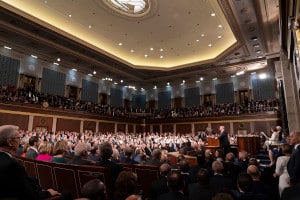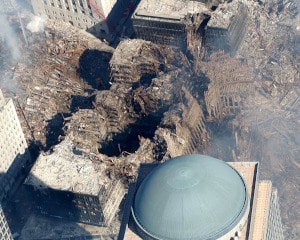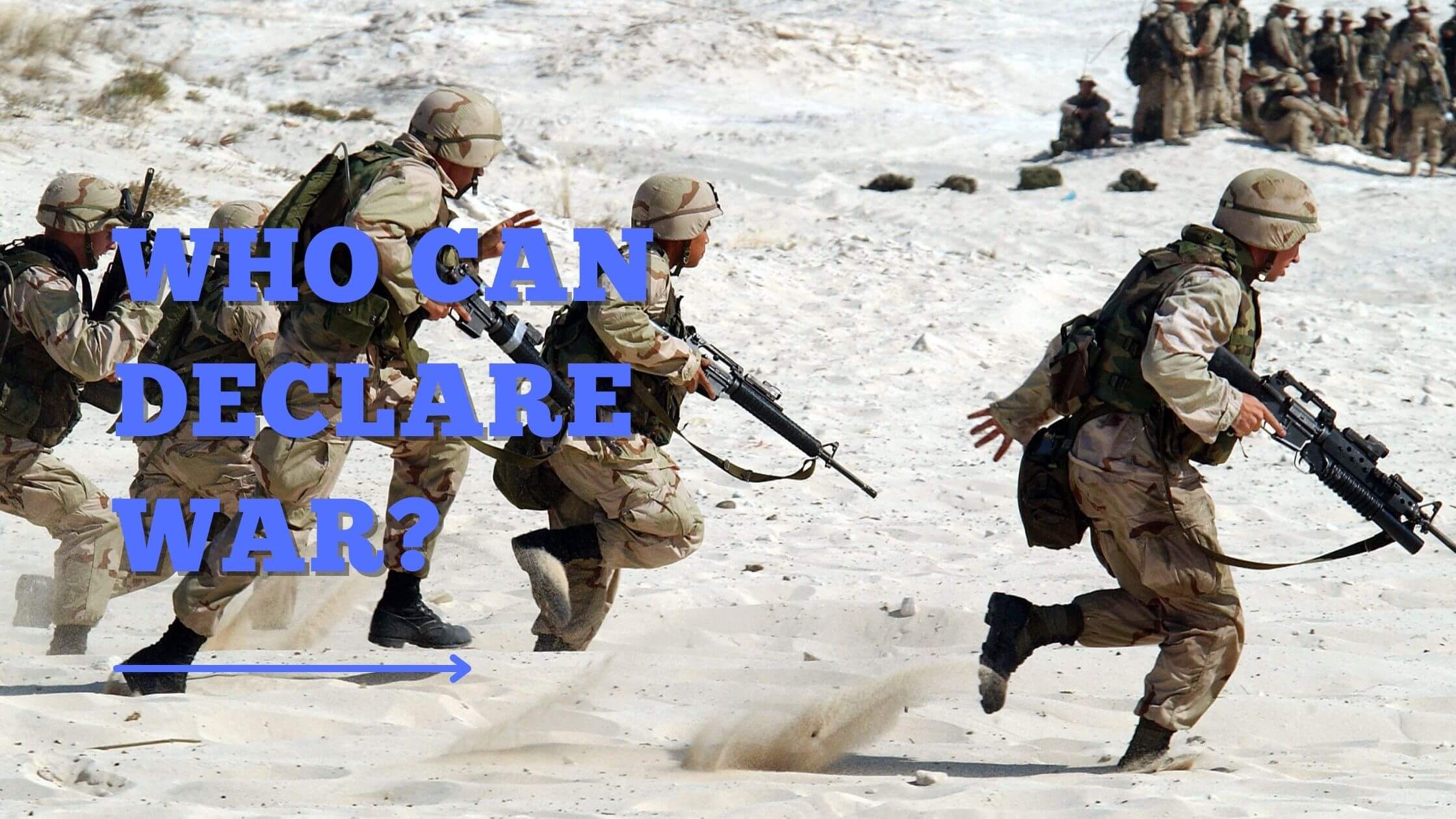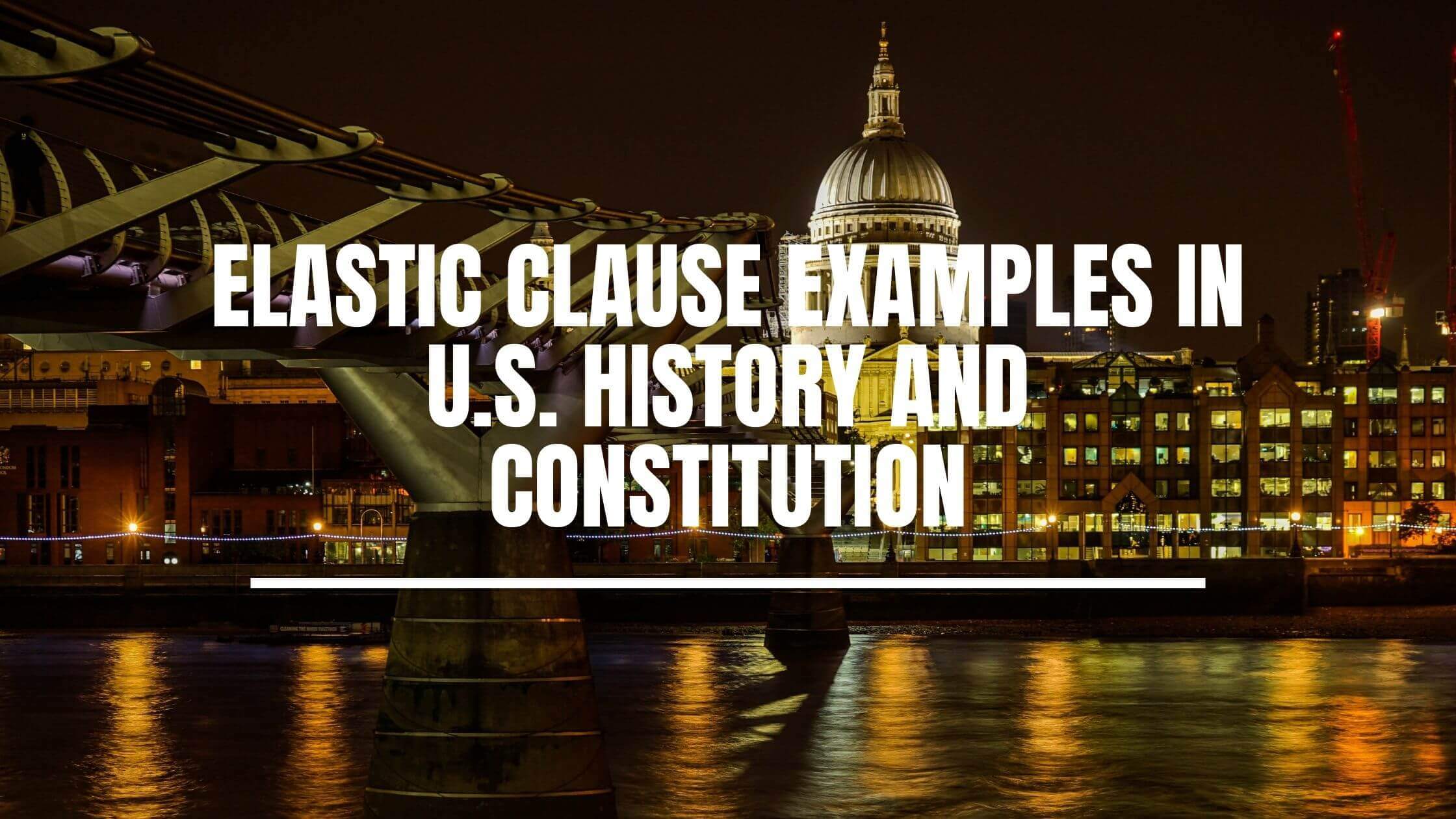Table of Contents
ToggleDeclaration of War
The United States Constitution asserts that Congress can declare war on other countries. But the United States President also has the option to use military force internationally without receiving a declaration of war. But for extended military engagement, Congress must authorize the action through a resolution, unless the President invokes limited emergency powers under the War Powers Resolution of 1973.
The United States has formally declared war eleven times, with the last being in 1942. Congress has authorized military force a number of other times, the most recent instance being in 2003.
What Does the Constitution Say?
Article I, Section 8 of the Constitution states that Congress has the power to declare war on other countries. Section 8 also gives Congress the power to raise and support armies, provide and maintain a navy, and make rules for the regulation of the armed forces.
The Constitution’s stipulation was designed to ensure a reasonable debate would occur in cases where the United States could go to war. Instead of having a central figure dictate whether the country should declare war, members of Congress elected by the American people would be responsible for doing so.

Get Smarter on US News, History, and the Constitution
Join the thousands of fellow patriots who rely on our 5-minute newsletter to stay informed on the key events and trends that shaped our nation's past and continue to shape its present.
How Does a Declaration of War Work?
A member of Congress introduces a declaration of war, often following a request or recommendation by the President. The Congressional members will be responsible for debating the declaration and then voting to approve or reject the message.

A majority of Congressional members must agree to the declaration for the United States to officially announce it is at war with a country. The President will then sign the formal declaration to confirm the decision.
The declaration will state that the President can deploy the United States armed forces against another country. The state of war will remain intact until a suitable resolution is met, whether it entails a peace treaty or one army surrendering or agreeing to withdraw forces.
The President will also receive many executive powers surrounding military operations, communications, manufacturing, and other points. The President gains expanded powers over military operations, logistics, and certain economic resources, but these powers remain subject to congressional oversight and legal limits.
An Authorization of Military Force Is Different
Often, the United States takes military action against another country, but it does not entail an actual declaration of war. The move is interpreted as authorization of military force.
The President can request the right to use military force when American interests require defending. Congress will introduce a resolution to determine if the President has the right to apply military force to protect the United States and its allies or whatever interests it holds.
The authorization follows similar rules to those for an official declaration of war. But what makes the authorization different is that the President does not receive the same special powers he would receive during an official declaration of war.
For example, in 1801, Thomas Jefferson requested the use of American naval forces to protect U.S. shipping interests against Tripoli. Congress authorized this action, which initiated the First Barbary War. Congress eventually authorized the right to take offensive actions against Tripolitan ships, including in cases where American ships were at risk. The move led to the First Barbary War, which lasted until 1805 and did not entail many military actions.
When Has War Been Declared?
The first of eleven formal declarations of war was in 1812 when the United States declared war against the United Kingdom. This declaration led to the War of 1812, which ended two years later following the signing of the Treaty of Ghent.

The country declared war with Mexico in 1846, precipitating the Mexican-American War, and then against Spain in 1898 to start the Spanish-American War.
There were two separate declarations of war in 1917 during World War I. In April, the declaration was against Germany, while a second declaration was made against Austria-Hungary in December.
The six most recent declarations were in 1941 and 1942, as the United States entered World War II. The country declared war on Japan on December 8, 1941, and then had separate declarations against Germany and Italy three days later. Three more declarations were made on June 5, 1942, against Bulgaria, Romania, and Hungary.
What About Authorizations?
Many authorizations for military action have involved situations where the United States had various interests in foreign bodies. In 1914, during the Mexican Revolution, President Wilson ordered U.S. forces to occupy Veracruz without prior Congressional authorization. The act entailed the United States occupying the city of Veracruz, although neither the United States nor Mexico had declared war against one another.
Authorizations were also issued to use military force during the 1958 Lebanon crisis, the Vietnam War, and the Persian Gulf War. The 2002 authorization to use military force in Iraq was the most recent new AUMF, but Congress officially repealed it in 2023.
The 2001 Authorization for Use of Military Force, enacted after the 9/11 attacks, remains active and is the primary legal basis for ongoing U.S. military operations against terrorist organizations worldwide. The United States never officially declared war on any country, but Congress did give the President the authority to engage in military actions against suspected terrorist organizations on September 14, 2001. The United States no longer has any military operations in Afghanistan, but it actively fought against many suspected terror groups.
Congressional Debates
The debate surrounding whether a war should be declared or military action be authorized is usually minimal, as Congressional members frequently agree upon these acts. Many declarations and authorizations occurred following events that threatened the United States, including foreign attacks on the country in 1941 and 2001.

For example, the 1917 declaration against Austria-Hungary was approved by all 74 members of the Senate, while New York Socialist Meyer London was the only one of the 366 House members to vote against it.
Meanwhile, all 82 Senators voted to declare war against Japan in 1941, while Montana Republican Jeanette Rankin was the only member out of 389 Representatives to vote against the move.
Sometimes the debate can be intense and lead to several days before anyone can agree on an action. For example, in 2002, it took fourteen days from when the authorization to use military force in Iraq was introduced to when President George W. Bush signed it into law. Congress had an extensive debate over the move, with about two-thirds of House members and three-quarters of Senators voting to pass the resolution.











